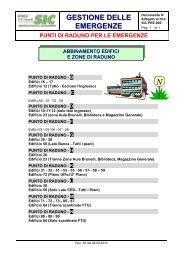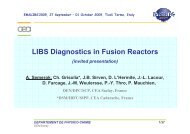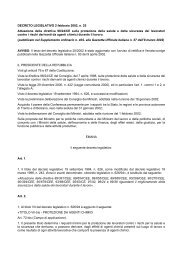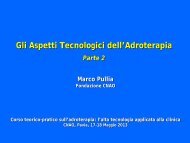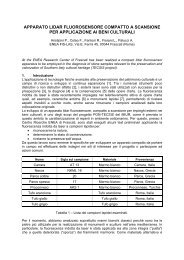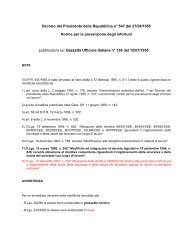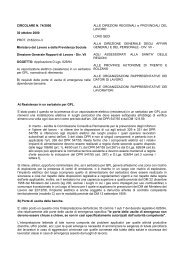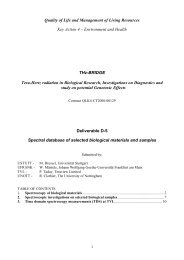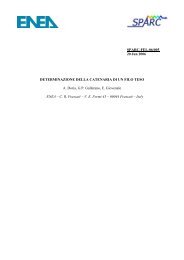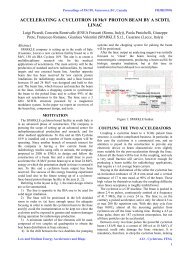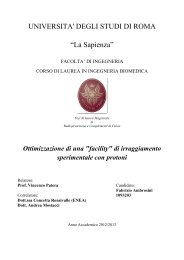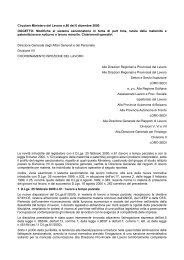Theory, Design and Tests on a Prototype Module of a Compact ...
Theory, Design and Tests on a Prototype Module of a Compact ...
Theory, Design and Tests on a Prototype Module of a Compact ...
Create successful ePaper yourself
Turn your PDF publications into a flip-book with our unique Google optimized e-Paper software.
5. A TUNING PROCEDURE FOR THE LIBO MODULE 85<br />
Figure 5.14. The bead pulling result after the bridge<br />
couplers tuning.<br />
to have the design values for the frequencies, <str<strong>on</strong>g>and</str<strong>on</strong>g>, more important,<br />
to have the frequencies <strong>of</strong> the coupling cells perfectly equals. This<br />
is important, because any difference in the coupling cells <strong>of</strong> a bridge<br />
coupler produces a step in the electric field <strong>of</strong> the adjacent tanks.<br />
5.2. Bead pulling measurement. The first bead pulling <strong>of</strong> the<br />
whole structure gave the result shown in figure 5.14. The figure shows<br />
the normalized level <strong>of</strong> the squared electric field in all the accelerating<br />
cavities; the space between two cavities represents the coupling cells.<br />
The space between two tanks is the <strong>on</strong>e <strong>of</strong> the bridge coupler which is<br />
out <strong>of</strong> axis <str<strong>on</strong>g>and</str<strong>on</strong>g> the bead does not pass through its cells.<br />
It is worth noting again that for the tuning procedure it is interesting<br />
<strong>on</strong>ly the relative levels between the tanks <str<strong>on</strong>g>and</str<strong>on</strong>g> not the absolute<br />
values, since this procedure is made at a low power level.<br />
For the measurement <strong>of</strong> figure 5.14, the π/2 frequency was 2996.99 MHz.<br />
Taking into account all the variati<strong>on</strong>s due to the real c<strong>on</strong>diti<strong>on</strong>s 12 , the<br />
goal frequency should be 2997.10 MHz. The quality factor value was<br />
around 4500 which is a good value, but still far from the final 7200,<br />
this was due to the imperfect joints between the tanks <str<strong>on</strong>g>and</str<strong>on</strong>g> the bridge<br />
couplers, since they were not brazed together yet.<br />
Also, in that c<strong>on</strong>figurati<strong>on</strong> <str<strong>on</strong>g>and</str<strong>on</strong>g> from a frequency measurement, it<br />
was possible to evaluate the stop-b<str<strong>on</strong>g>and</str<strong>on</strong>g> <strong>of</strong> the sec<strong>on</strong>d nearest modes<br />
which was SBB = +216 kHz. This stop-b<str<strong>on</strong>g>and</str<strong>on</strong>g> is related to the bumplike<br />
behavior in the resp<strong>on</strong>se <strong>of</strong> bead pulling measurement, its presence<br />
means that the sec<strong>on</strong>d nearest modes in the dispersi<strong>on</strong> diagram are<br />
excited <str<strong>on</strong>g>and</str<strong>on</strong>g> the behavior for these modes is just as a bump, having a<br />
minimum for the field (maximum) in the central bridge coupler cavity<br />
<str<strong>on</strong>g>and</str<strong>on</strong>g> a maximum field in the end cells (minimum).<br />
12 Vacuum effect, temperature, final brazing, etc..



